From a lost craft village to the journey of "awakening" memories
Kim Hoang paintings were born in the second half of the 18th century, originating from the Nguyen Si family in Thanh Hoa - people who brought the wood carving and printing profession to Kim Hoang to start a business. From their hands, the sophisticated woodblock printing technique was passed down and developed into a separate painting genre. Different from Dong Ho paintings printed on white diep paper or Hang Trong paintings with an urban feel, Kim Hoang paintings are printed on bright red paper, creating a warm, brilliant and vibrant tone like the breath of spring in Vietnamese culture.
Each Kim Hoang painting hung in every house on Tet holiday is not only for decoration, but also conveys wishes for good fortune, prosperity and peace, reflecting the Vietnamese people's belief in the harmony between humans, nature and heaven and earth.
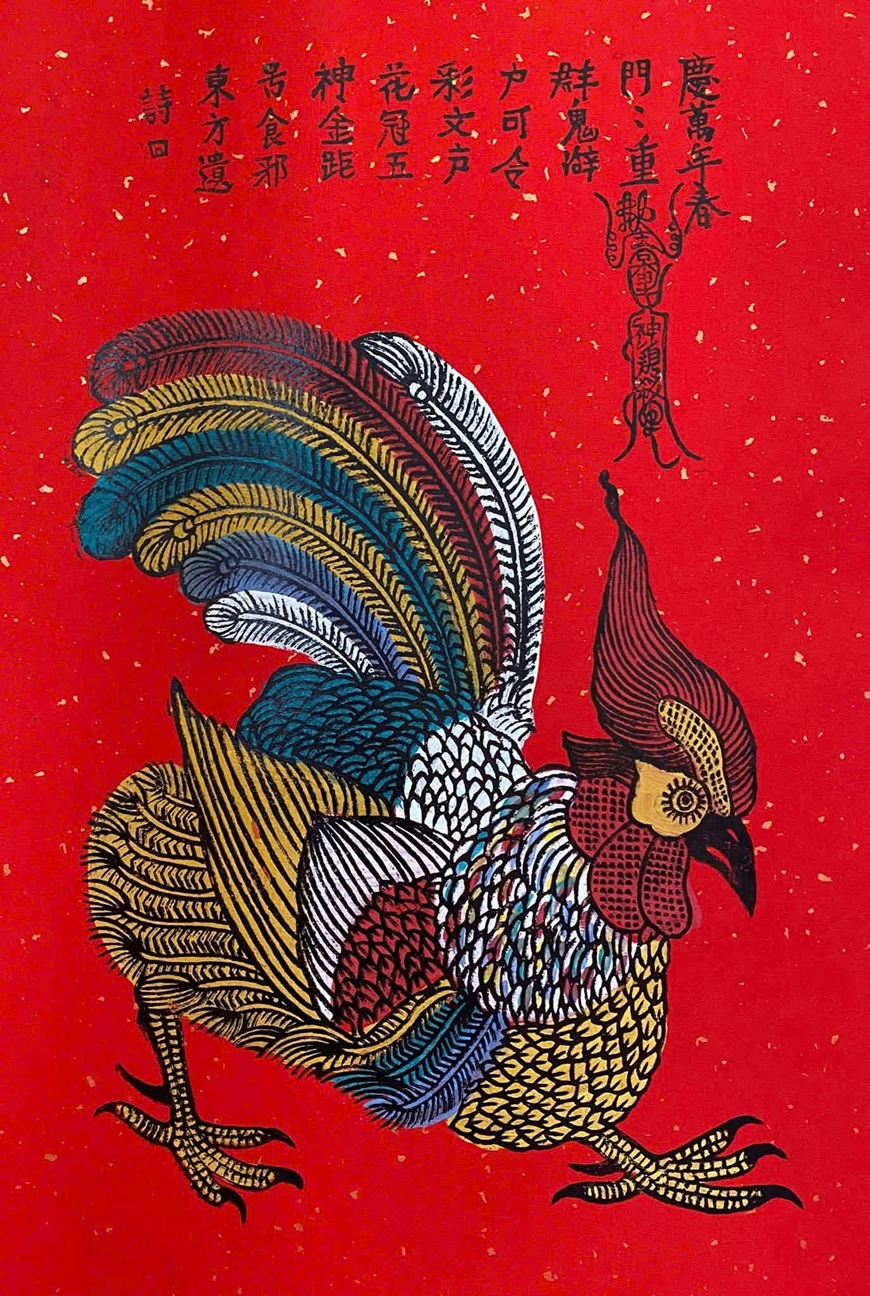 |
The painting "God Rooster" was restored by artist Dao Dinh Chung. |
In 1915, a major flood washed away most of the village's woodblocks. After 1945, the Kim Hoang painting craft was completely lost.
Born in that land, artisan Dao Dinh Chung could not help but feel proud when hearing about the tradition and was saddened when seeing that his village no longer had people making paintings, no longer had the red color of Tet hanging like the old people. "Growing up with memories of the old profession, I always wondered: Why could my ancestors do it but my descendants lost it?" - he said.
In 2014, during a meeting with researcher Nguyen Thi Thu Hoa, Mr. Chung was inspired to restore the lost painting genre. They began an arduous journey: finding ancient engravings, restoring colors, and especially recreating red paper - the soul of Kim Hoang paintings. "We had to try hundreds of dyeing and drying times to get the original red color. This red color is not just for beauty, it is the color of luck, of faith and life" - the artist recalled.
Keeping the profession is like keeping a part of the Vietnamese soul
Once he had the red paper, Mr. Chung continued to restore the printing blocks based on ancient documents and old sketches. Each engraving line and each layer of ink was carefully calculated. In 2015, the first “Than Ke” painting was completed. This was an important milestone confirming that the Kim Hoang painting genre could truly revive.
Since then, he has restored more than 40 paintings, including all 12 zodiac animals, with many creative themes while still maintaining the folk spirit. “Kim Hoang paintings are difficult because the red background color is very strong; if not mixed properly, the printed image will be submerged. We must both maintain ancient techniques and research modern colors so that the paintings are both correct and alive,” said Mr. Chung.
For artisan Dao Dinh Chung, making paintings is not only an artistic labor, but also a way to preserve a part of Vietnamese culture. Each stage from mixing colors, carving, printing, to drying requires patience and meticulousness. The artisan shared: “If the weather is humid, the paper is soft, the color does not stick; only when the sun is bright, the ink will be even. Kim Hoang paintings are paintings of nature, of heaven and earth, and of the heart of the maker.”
Not only restoring the craft, he also opened a space to experience Kim Hoang paintings, welcoming students, students, and tourists to try printing and painting. The artisan believes that only when young people can touch the woodblocks and see the colors appear on the woodblocks, can they truly feel the value of the heritage.
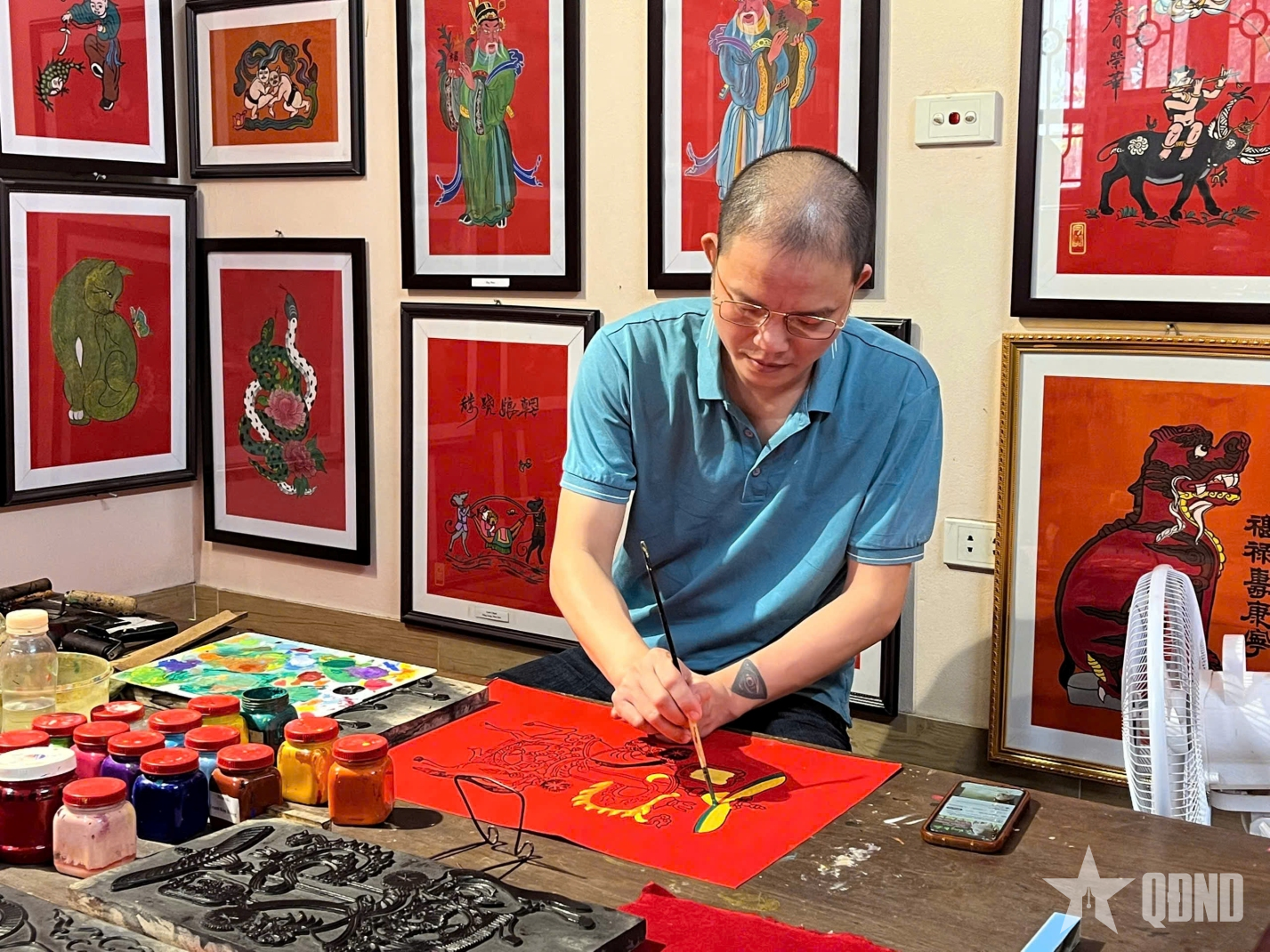 |
Artist Dao Dinh Chung is working on the drawing. |
Nowadays, Kim Hoang paintings are present at many exhibitions and cultural fairs. Every Tet holiday, the bright red paintings are hung solemnly in many houses as a wish for peace and prosperity.
However, the path to preserving the craft is still arduous. The production is entirely manual, resulting in a small number of paintings and high prices; output mainly depends on orders and tourists. However, artisan Dao Dinh Chung still perseveres: “I do not make paintings just to sell, but to preserve a part of the Vietnamese soul. If I do not do it, my descendants will no longer know what Kim Hoang is.”
The red color of Kim Hoang is not only the color of paper, but also the color of memory and belief, proving that no matter how much time has erased, folk values can still be revived if there are people with enough heart and perseverance to preserve them. From the hands of the artisan, the red color of Kim Hoang shines brightly again, carrying the breath of the old craft village into the new rhythm of life. It is not only the journey to restore a line of paintings, but also the revival of Vietnamese cultural memory, where a craftsman silently preserves fading values - so that those red paintings continue to tell the story of belief, perseverance and love for heritage of Vietnamese people today.
Article and photos: TRAN KHANH HUYEN
Source: https://www.qdnd.vn/van-hoa/doi-song/hanh-trinh-hoi-sinh-sac-do-kim-hoang-882619


![[Photo] Closing ceremony of the 18th Congress of Hanoi Party Committee](https://vphoto.vietnam.vn/thumb/1200x675/vietnam/resource/IMAGE/2025/10/17/1760704850107_ndo_br_1-jpg.webp)
![[Photo] General Secretary To Lam attends the 95th Anniversary of the Party Central Office's Traditional Day](https://vphoto.vietnam.vn/thumb/1200x675/vietnam/resource/IMAGE/2025/10/18/1760784671836_a1-bnd-4476-1940-jpg.webp)
![[Photo] Collecting waste, sowing green seeds](https://vphoto.vietnam.vn/thumb/1200x675/vietnam/resource/IMAGE/2025/10/18/1760786475497_ndo_br_1-jpg.webp)
![[Photo] Immerse yourself in the colorful musical world of “Secret Garden Live in Vietnam”](https://vphoto.vietnam.vn/thumb/1200x675/vietnam/resource/IMAGE/2025/10/18/1760805978427_ndo_br_thiet-ke-chua-co-ten-41-png.webp)

















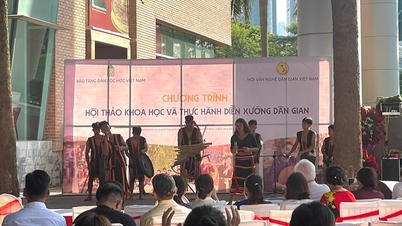


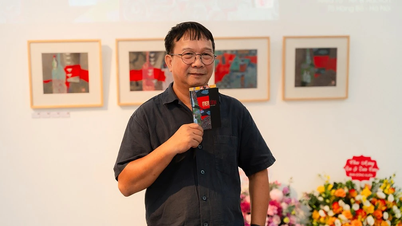







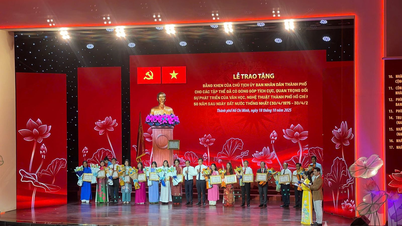




















































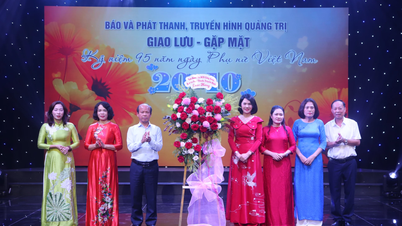





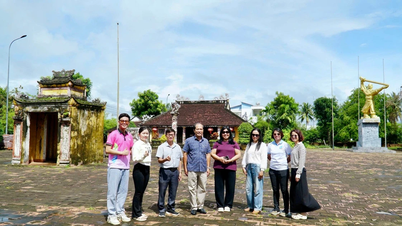










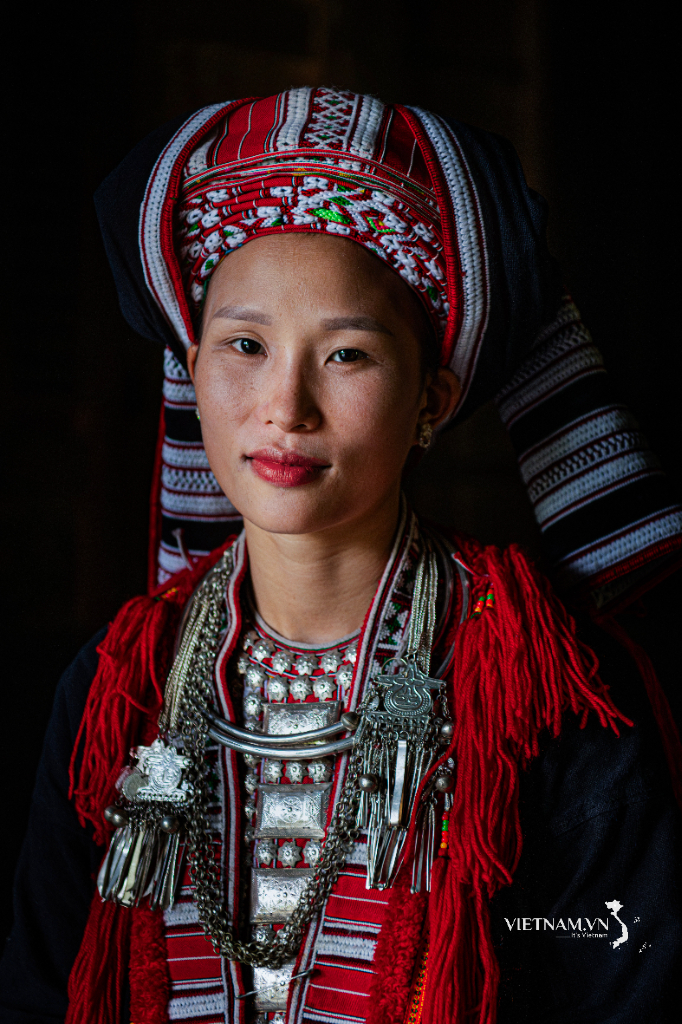


Comment (0)